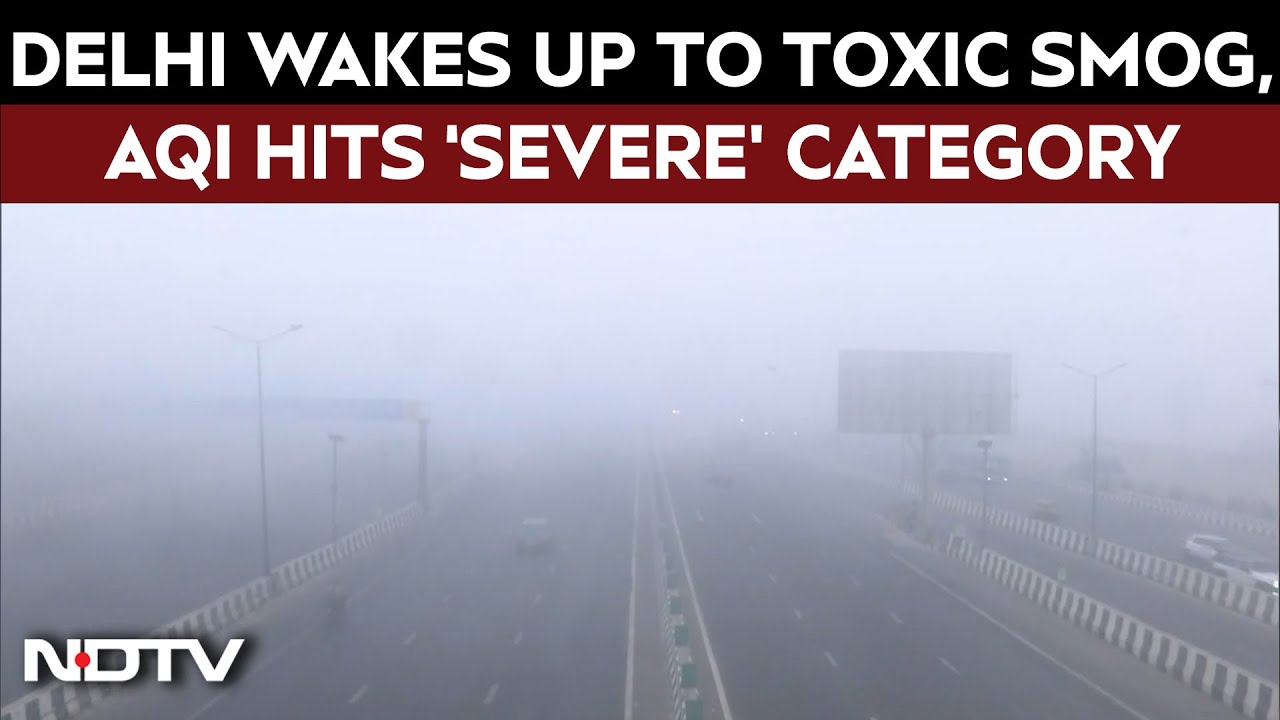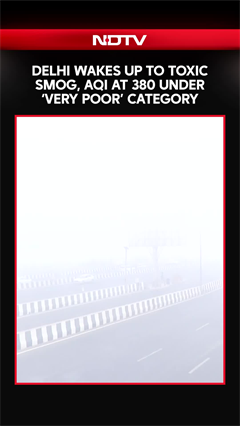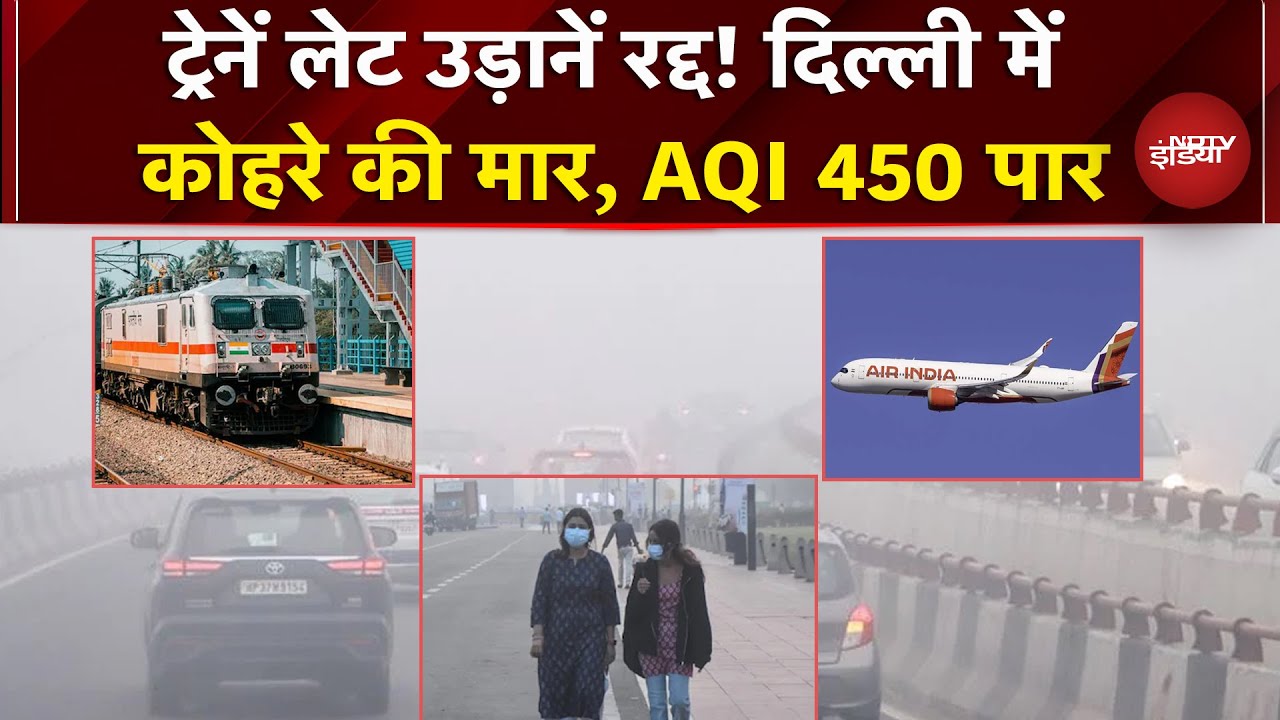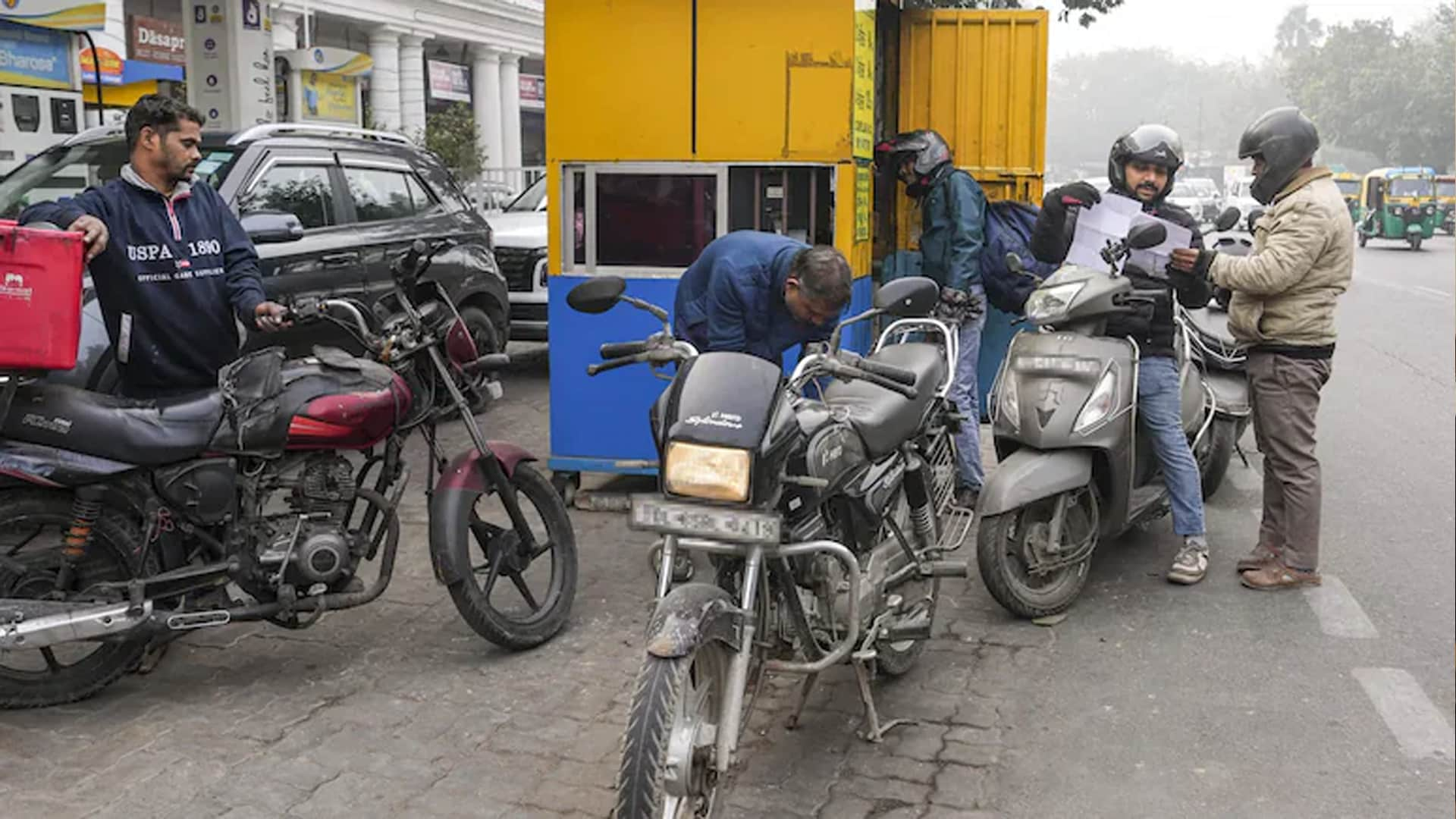- Home/
- Delhi's Air Quality "Severe" Again, Week After Pollution Curbs Removed
Delhi's Air Quality "Severe" Again, Week After Pollution Curbs Removed

Air quality in Delhi turned “severe” again on Friday with a dip in temperatures and slow wind speed at night allowing accumulation of pollutants.
The city's Air Quality Index (AQI) stood at 401 at 8 am.
Delhi has been witnessing a gradual increase in AQI levels after a marginal improvement on Sunday.
The 24-hour average AQI, recorded at 4 pm every day, was 390 on Thursday, 394 on Wednesday, 365 on Tuesday, 348 on Monday and 301 on Sunday.
The increase in AQI levels comes after the Centre on Saturday removed stringent curbs, including a ban on construction work related to linear projects and the entry of polluting trucks in Delhi, following a drop in pollution levels due to a favourable wind speed and direction.
Neighbouring Ghaziabad (386), Gurugram (321), Greater Noida (345), Noida (344) and Faridabad (410) also recorded "very poor" to "severe" air quality.
An AQI between zero and 50 is considered “good”, 51 and 100 “satisfactory”, 101 and 200 “moderate”, 201 and 300 “poor”, 301 and 400 “very poor”, 401 and 450 “severe” and above 450 “severe-plus”.
According to the air quality early warning system developed by the Pune-based Indian Institute of Tropical Meteorology, pollution levels are likely to oscillate in the "very poor" to "severe" categories in the next five to six days.
Data from a joint project by the Delhi government and the Indian Institute of Technology (IIT), Kanpur, revealed that vehicular emissions accounted for about 38 per cent of the capital's air pollution on Thursday.
Secondary inorganic aerosols -- particles such as sulfate and nitrate that are formed in the atmosphere due to the interaction of gases and particulate pollutants from sources like power plants, refineries and vehicles -- are the second major contributor to Delhi's foul air, accounting for 25 to 35 per cent of the air pollution in the city over the last few days.
Biomass burning, including post-harvest paddy straw burning in neighbouring states, contributed 21 per cent to the capital's air pollution the previous day.
(Except for the headline, this story has not been edited by NDTV staff and is published from a syndicated feed.)
also read
Thick Smog Blankets Delhi-NCR, Over 100 Flights Cancelled, 50 Trains Delayed
Edited by Aastha AhujaDelhi Government To Install Air Purifiers In 10,000 Classrooms As Pollution Soars
Reported by Ishika Verma, Edited by Amit ChaturvediBattle For Breath: Mumbai's Elite Enclave Turns Pollution Hotspot
Reported by Jitendra Dixit, Edited by Srishti Kapoor
Latest Stories
- Edited by Aastha Ahuja | Saturday December 20, 2025 , New Delhi
The national capital, Delhi, woke up to a thick layer of smog blanketing the city with the Air Quality Index (AQI) at 380, falling under the 'very poor' category.
- Reported by Ishika Verma, Edited by Amit Chaturvedi | Friday December 19, 2025
The government plans a phased rollout, funded through the environment cess, though exact installation timelines have not been announced.
- Reported by Jitendra Dixit, Edited by Srishti Kapoor | Friday December 19, 2025
Air quality in and around Bhakti Park and Wadala Truck Terminal (TT) has plummeted in recent weeks, with AQI levels soaring beyond 300 - classified as "severe".
- Edited by Astitva Raj | Friday December 19, 2025
His post quickly became popular among people who have experienced similar health and safety concerns while living in Delhi.
- Press Trust of India | Friday December 19, 2025 , New Delhi
Commuter awareness rises after Delhi's BS-VI and No PUC, No Fuel enforcement; fuel sales dip in border areas, PUC queues remain steady, says DPDA president.
................................ Advertisement ................................
Latest Videos
Opinion
Blog | Well Done, Delhi. You've Turned Lung Sacrifice Into A Badge Of HonourSaikat Kumar Bose
Monday November 10, 2025Till some years back, Delhiites would ask angry questions to those in power about the capitals annual tryst with toxic air. This has changed. Those in the driving seat dont see the need to answer now.
Opinion | Why Indians Have Just Given Up On Air Pollution CrisisTanushree Ganguly
Friday December 20, 2024While some may argue that people in Delhi are now more aware of air pollution than they were a decade back, my rebuttal would be that awareness does not mean that people are concerned.
Opinion | You Must Outrage Over Filthy Air More Than Once A YearJyoti Pande Lavakare
Tuesday December 10, 2024Delhi welcomed us with monsoon rains and mangos. We were home. Fast forward a couple of years, in the winter of 2012, I found myself in denial about something other parents, mostly expats, were calling toxic air.
Opinion | Delhi's Air Pollution Situation Is Like A Bad MarriageNishtha Gautam
Friday November 22, 2024On a good day, such as today, the AQI reading in Delhi is 407. We are jubilant at the sickly sunshine trickling through the slightly dissipated smog. At least its not 1600.
दिवाली... पराली... सियासी जुगाली!Ashwini kumar
Monday November 18, 2024दिल्ली-एनसीआर में प्रदूषण का समाधान तो आज तक मिला नहीं. हर साल चिंतित होकर हम-आप सांसों की तकलीफ के साथ-साथ दिल और ब्लड प्रेशर के मरीज भी क्यों बनें?


















